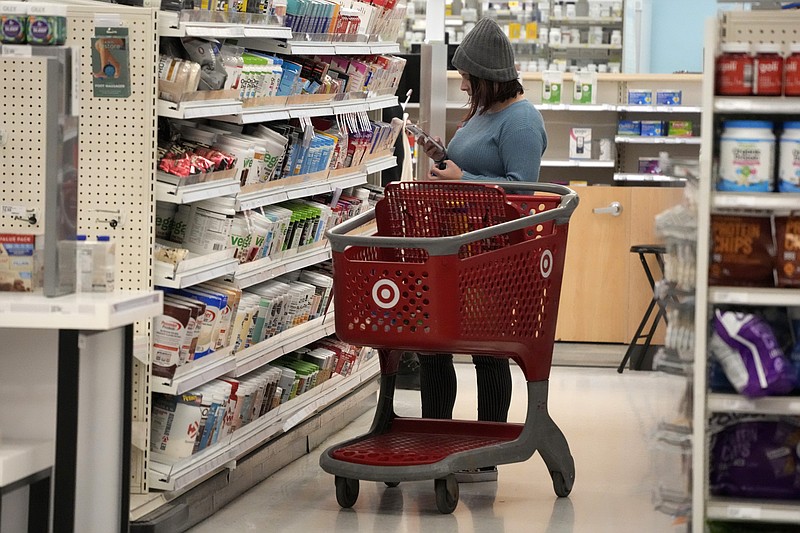By CHRISTOPHER RUGABER
AP Economics Writer
WASHINGTON (AP) -- The Federal Reserve's preferred inflation gauge eased further in December, and consumer spending fell -- the latest evidence that the Fed's series of interest rate hikes are slowing the economy.
Friday's report from the Commerce Department showed that prices rose 5% last month from a year earlier, down from a 5.5% year-over-year increase in November. It was the third straight drop.
Consumer spending fell 0.2% from November to December and was revised lower to show a drop of 0.1% from October to November. Last year's holiday sales were sluggish for many retailers, and the overall spending figures for the final two months of 2022 were the weakest in two years.
The pullback in consumer spending will likely be welcomed by Fed officials, who are seeking to cool the economy by making lending increasingly expensive. A slower pace of spending could boost their confidence that inflation is steadily easing. Still, the decline in year-over-year inflation matches the Fed's outlook and isn't likely to alter expectations that it will raise its key rate by a quarter-point next week.
On a monthly basis, inflation ticked up just 0.1% from November to December for a second straight month. Energy prices plunged 5.1%, and the overall cost of goods also fell.
"Core" prices, which exclude volatile food and energy costs, rose 0.3% from November to December and 4.4% from a year earlier. The year-over-year figure was down from 4.7% in November, though still well above the Fed's 2% target.
Falling prices for oil, gas, copper, lumber, wheat and other commodities, along with the unclogging of supply chains, have helped slow the retail costs of cars, furniture and clothes, among other items.
Price increases, though, have remained persistently high for some goods and services, including eggs, which skyrocketed 60% last month compared with a year ago. Egg prices rose 11.1% just in December, inflated by an outbreak of avian flu that has led to a culling of herds and higher feed costs.
"The latest data offer the first tangible signs that the economy's main engine is slowing," said Oren Klachkin, lead U.S. economist at Oxford Economics, referring to consumers, whose spending accounts for about 70% of economic activity.
